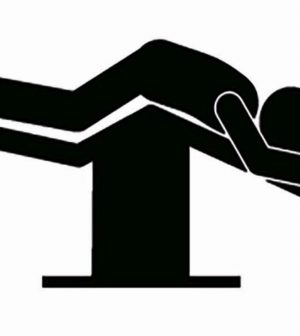- Navigating Your Midlife Crisis: Embracing New Possibilities
- City Raccoons Showing Signs of Domestication
- Mapping the Exposome: Science Broadens Focus to Environmental Disease Triggers
- One Week Less on Social Media Linked to Better Mental Health
- Your Brain Changes in Stages as You Age, Study Finds
- Some Suicide Victims Show No Typical Warning Signs, Study Finds
- ByHeart Formula Faces Lawsuits After Babies Sickened With Botulism
- Switch to Vegan Diet Could Cut Your Greenhouse Gas Emissions in Half
- Regular Bedtime Does Wonders for Blood Pressure
- Dining Alone Could Mean Worse Nutrition for Seniors
Lying Prone Can Help Hospitalized COVID Patients, But Many Can’t Sustain It

Lying facedown may improve breathing in COVID-19 patients who are awake, but many can’t stay in a prone position long enough to reap the benefit, a new study finds.
Prone positioning is standard for patients with severe acute respiratory distress syndrome (ARDS), because it encourages a larger part of the lung to expand, so patients can take bigger breaths. However, these patients are typically sedated and on a ventilator.
Reports that prone positioning may also help COVID-19 patients who are awake have led to its widespread use, but a number of studies have yielded conflicting results.
To learn more, researchers assessed 248 awake COVID-19 patients admitted to 15 hospitals in Canada and the United States from May 2020 until May 2021. The patients, average age 56, were not critically ill but needed supplemental oxygen.
Some of the patients were instructed to stay in a prone position for up to two hours four times a day, and encouraged to sleep in a prone position for up to seven nights, while others didn’t receive such advice (standard care).
In the prone group, the average time spent prone in the first 72 hours was around 2.5 hours per day. Discomfort was the main reason cited by patients for spending only a few of the recommended hours in the prone position.
None of the patients in the standard care group spent any time in the prone position.
After accounting for other factors, the researchers found that the risk of death, mechanical ventilation or worsening respiratory failure was similar between the prone group (18 events) and the standard care group (17 events).
The difference in the ratio of oxygen saturation to fraction of inspired oxygen (an indication of how well the lungs are transferring oxygen to the blood) after 72 hours was also similar between the two groups, according to the study, published March 23 in the BMJ.
The trial was stopped early when it became clear that sufficient benefits would not be achieved in the prone group.
The study highlights that prone positioning “is generally not well-tolerated and innovative approaches are needed to improve adherence,” because “simply instructing patients to lie prone and providing them with reminders is insufficient for most patients to spend a prolonged period in the prone position,” Dr. Michael Fralick, from the Division of General Internal Medicine at Sinai Health in Toronto, and colleagues wrote.
Further research is needed to determine whether a greater amount of time spent in the prone position might benefit COVID-19 patients, they concluded.
This and previous studies show “that both duration and timing of awake prone positioning are important determinants of its efficacy in patients with COVID-19,” Dr. Joseph Barker, an academic clinical fellow in cardiology at the University of Leicester in England, and colleagues wrote in an accompanying editorial.
“Future studies must focus on finding optimal means of maintaining awake prone positioning in the care of severe, likely late-stage COVID-19,” the editorial authors said in a journal news release.
More information
There’s more on COVID-19 and prone positioning at Mount Nittany Health.
Source: HealthDay
Copyright © 2025 HealthDay. All rights reserved.










